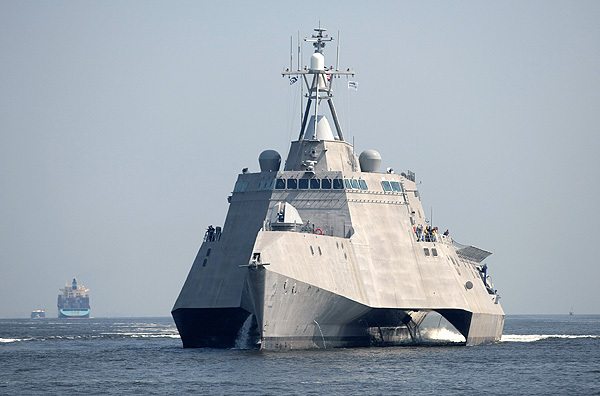Contractor low-balling and misplaced confidence in defense procurement estimates have found another victim: the Littoral (close to shore) Combat Ship (LCS). The FY 2012 National Defense Authorization Act (NDAA) passed by the House grants more than $2 billion requested by the Navy for the LCS. This includes approximately $1.8 billion for the building of four new LCSs and $286 million for research and development.
On December 9, 2010, POGO wrote a letter to the Senate Armed Services Committee opposing the Navy’s plan to change its LCS acquisition strategy without providing time for meaningful congressional consideration. Originally, two distinct LCS designs were created—one by a team led by Lockheed Martin and the other by a General Dynamics-led team.
In this “down-select strategy,” adopted in 2009, these two teams would vie to create the optimal LCS design and then, with one optimal design in hand, another bidding competition would be held to build 19 more ships. The new acquisition strategy, however, awards the two different LCS design teams a ten-ship contract each, and effectively blocks out all other shipbuilders from competing to build the LCS.
This strategy was adopted in spite of the Congressional Budget Office’s (CBO’s) finding that it would ultimately cost $740 million more than the down-select plan.
A Congressional Research Service (CRS) report also noted that “Managing the construction of two very different LCS designs could place increased demands on overall Navy program management capacities…factors that might increase the chances of program-management challenges in the LCS program or of the Navy not detecting in a timely manner construction-quality problems that might occur in one or both LCS designs.”
But those aren’t the only drawbacks to the new plan: It is also highly doubtful that LCS funding for fiscal year 2012 will actually lead to the building of all four ships. Originally, the Navy estimated that each ship would cost $220 million. Just five years later, the Navy expects each ship to cost more than double this amount, and just last year the Navy spent more than a billion dollars on the procurement of just two Littoral Combat Ships.
In fact, no LCS has been built for less than $500 million. The CBO estimates that these four ships, built under the dual award plan, will cost a total of $2.29 billion ($572.5 million per ship), or more than $400 million more than has been budgeted.
Yet, the House acquiesced to the Navy’s faulty LCS cost projections and continues to be low-balled by defense contractors that lock in immense procurement efforts with artificially low initial bids.
The Senate should not be similarly duped when it authorizes funding for the LCS.










